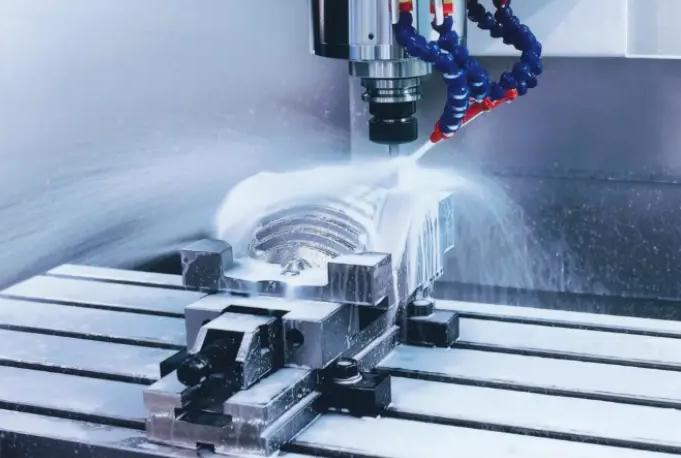Machining zirconia ceramic part by CNC
The general process of machining zirconia ceramic parts by CNC precision engraving machine covers every link from raw material preparation to final product inspection. Because of its high hardness, high wear resistance, high temperature resistance and excellent chemical stability, zirconia ceramics have been widely used in aerospace, medical equipment, nuclear industry and other fields. However, its processing is also relatively difficult, requiring fine operation and advanced equipment technology to ensure processing quality and efficiency.

Raw material preparation
Before processing zirconia ceramic parts, the raw materials must be mixed and prepared first. The powder of various components is evenly mixed in the ball mill to ensure the consistency of the material composition. Then, through the granulation process, an appropriate amount of molding agent is added to the powder to form particles with similar particle size and good fluidity. The material after granulation is beneficial to improve the filling property, increase the filling density, and prepare for the subsequent forming process.
The forming process
Forming is one of the key steps in the machining of zirconia ceramics. The commonly used forming methods include extrusion forming, hot die casting forming, gel injection molding and so on. These methods have their own characteristics and are suitable for parts of different shapes and sizes. Taking hot die casting forming as an example, quantitative paraffin is first melted into wax liquid, and then mixed with dried ceramic powder to make wax plate. Then the wax plate is placed in the hot die casting machine cylinder, heated and melted into slurry, pressed into the mold cavity through the suction casting mouth, through the process of pressure preservation, depressing, cooling, and so on, the final ceramic blank is obtained.

Processing
A process is usually required before the green body is sintered. This processing is mainly to remove burrs from the surface of the green, trim the size and shape, and prepare for the subsequent sintering process. In the process of processing, it is necessary to choose the appropriate tool and cutting parameters to avoid problems such as edge collapse and fragmentation caused by high material hardness.
Sintering process
Sintering is the core step of zirconia ceramic part processing. During the sintering process, the physical and chemical changes occur under high temperature, the volume shrinkage, density increase and mechanical properties improve. Sintering temperature, time, atmosphere and other parameters have important effects on the performance of the final product. Therefore, these parameters need to be strictly controlled during the sintering process to ensure product quality.
Secondary processing
The sintered ceramic part usually requires secondary processing to further improve its accuracy and surface quality. Secondary processing mainly includes grinding, polishing, drilling and other processes. In the machining process, it is necessary to use diamond tools or other high-performance cutting tools to ensure processing efficiency and part quality.
Testing and packaging
After the completion of the processing, the ceramic part needs to be strictly tested. The test contents include dimensional accuracy, surface roughness, flatness, smoothness, etc. At the same time, it is also necessary to carry out visual inspection to find possible gaps, cracks and other defects. For qualified products, they need to be cleaned and packaged. The cleaning process needs to remove the oil and impurities on the surface of the part to ensure the cleanliness of the product. The packaging process requires the selection of appropriate packaging materials and methods to ensure that the product is not damaged during transportation and storage.

Quality control and continuous improvement
In the process of machining zirconia ceramic part by CNC precision engraving machine, quality control is very important. Through the development of strict operating procedures, the selection of high-quality raw materials and cutting tools, regular maintenance and overhaul of equipment and other measures, you can ensure the stability of the processing process and the reliability of product quality. In addition, it is also necessary to continuously improve and optimize all aspects of the processing process to improve production efficiency and reduce costs.
In short, the general process of CNC machining zirconia ceramic part includes raw material preparation, forming, primary processing, sintering, secondary processing, testing and packaging, as well as quality control and continuous improvement steps. These steps are interrelated and influence each other, which together constitute the complete process of zirconia ceramic part processing. In actual operation, the appropriate processing method and equipment technology need to be selected according to the specific product requirements and production conditions to ensure processing quality and efficiency.